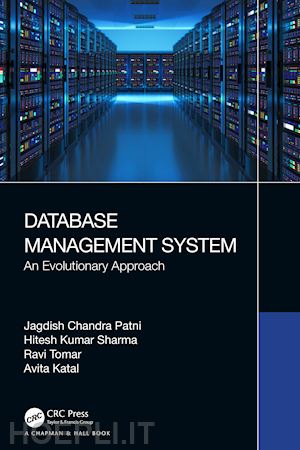Dr. Jagdish Chandra Patni is working as Associate Professor at School of Computer Science , University of Petroleum and Energy Studies, Dehradun, Uttarakhand, India. He did his Ph.D. in the area of High Performance computing in 2016 . He competed his M. Tech. and B. Tech. in the year 2009 and 2004 respectively. Dr Patni is actively working in the research areas of Database Systems, High Performance computing, Software Engineering, Machine Learning and IoT. He has authored more than 50 research articles in the journal and conferences of repute nationally and internationally. Dr Patni have authored 5+ books and book chapter with international publishers like Springer. He is active Guest Editor/Reviewer of various referred International journals. He has delivered 15 Keynote/Guest speech in India and abroad. He has organized multiple conferences/seminars/workshops/FDP’s in India and abroad. He has been awarded by researcher of year award in year 2018 by SRD, teacher of the year 2020 by Govt. of Uttarakhand, best paper award by Hosei University Tokyo, Japan in 2020 and many more. He is Senior member of IEEE, MIE, IEANG, IACSIT, Vigyan Bharti, etc. Dr. Hitesh Kumar Sharma is working as Associate Professor at School of Computer Science, University of Petroleum and Energy Studies, Dehradun, Uttarakhand, India. He did his Ph.D. in Database Performance Tuning in 2016. He has completed his M.Tech. in 2009. Currently he is also working in Machine Learning, Deep Learning, Image Processing and IoT with Blockchain. He has authored more than 60 research articles in the journal and conferences of repute nationally and internationally. Dr. Sharma have authored 3 books and book chapter with international publishers like Springer. He is active Guest Editor/Reviewer of various referred International journals. He has delivered various Keynote/Guest speech in India and abroad. He got many certifications in DevOps in last two years. He has also published 03 Patents in his academic career in last few years. Dr. Ravi Tomar is currently working in the capacity of Assistant Professor (Selection Grade) in the School of Computer Science at the University of Petroleum & Energy Studies, Dehradun, India. He is an experienced academician with a demonstrated history of working in the higher education industry. Skilled in Programming, Computer Networking, Stream processing, Python, Oracle Database, C++, Core Java, J2EE, RPA and CorDApp. His research interests include Wireless Sensor Networks, Image Processing, Data Mining and Warehousing, Computer Networks, big data technologies and VANET. He has authored 51+ papers in different research areas, filled two Indian patent, edited 2 books and have authored 4 books. He has delivered Training to corporates nationally and internationally on Confluent Apache Kafka, Stream Processing, RPA, CordaApp, J2EE and IoT to clients like KeyBank, Accenture, Union Bank of Philippines, Ernst and Young and Deloitte. Dr Tomar is officially recognized as Instructor for Confluent and CordApp. He has conducted various International conferences in India, France and Nepal. He has been awarded a young researcher in Computer Science and Engineering by RedInno, India in 2018. Ms. Avita Katal is working as an Assistant Professor (SS) in the Department of Virtualization, School of Computer Science, University of Petroleum and Energy Studies, Dehradun, Uttarakhand, India. She received her B. E degree from University of Jammu in Computer Science Engineering in 2010 and M. Tech degree in 2013. She is currently pursuing her Ph.D. in the area of Cloud Computing from University of Petroleum and Energy Studies, Dehradun, India. Her research interest is in the area of Cloud Computing, Mobile Ad hoc Networks, Blockchain, IOT, and Artificial Intelligence etc. She has published various research papers in renowned conferences and journals and has also served as a reviewer for various conferences and journals. She has a keen interest in improving the teaching pedagogies and has participated in various faculty development programs. She is also currently pursuing a Postgraduate Certificate in Academic Practice (PGCAP) from University of Petroleum and Energy Studies, Dehradun, India.












